Saturday 25th and Sunday 26th March 2023
This trip has a complicated history. We originally planned a three day trip to Bruges in December 2021 with our friends Liz and Martin. However, just as we were about to depart, an incomprehensible rule was introduced which prevented people from staying for more than 48 hours in Belgium without taking a Covid test. We were never entirely sure how this was meant to restrict the spread of the virus but we did not want to break the rules and risk having to pay for our own accommodation to isolate.
Our Eurostar tickets were non-transferable so we could change neither the names of the passengers nor the route travelled. We therefore decided to leave Belgium early, spend one night in Lille, in France, and book new tickets to travel home from there to circumvent the rule. This left us with two return tickets from Brussels. Robert has been repeatedly deferring these tickets ever since but our time has run out and it was a case of ‘use them or lose them’.
So here we are, on a trip planned to take in Düsseldorf, Bonn and Maastricht, returning via Brussels.
As will become apparent in future blog posts – all will not go smoothly.
Düsseldorf is said to be the German capital of fashion and Königsallee Germany’s most elegant avenue. It boasts many expensive designer brands. A landscaped canal called Kö-Graben runs down the centre of this fashionable boulevard. The canal is just over 100 feet wide and is fed by water from the Düssel, a small tributary of the Rhine which gives the city its name. The canal and boulevard combined are 260 feet wide and were completed between 1802 and 1804. Please note that there are no boats on this ‘canal’.
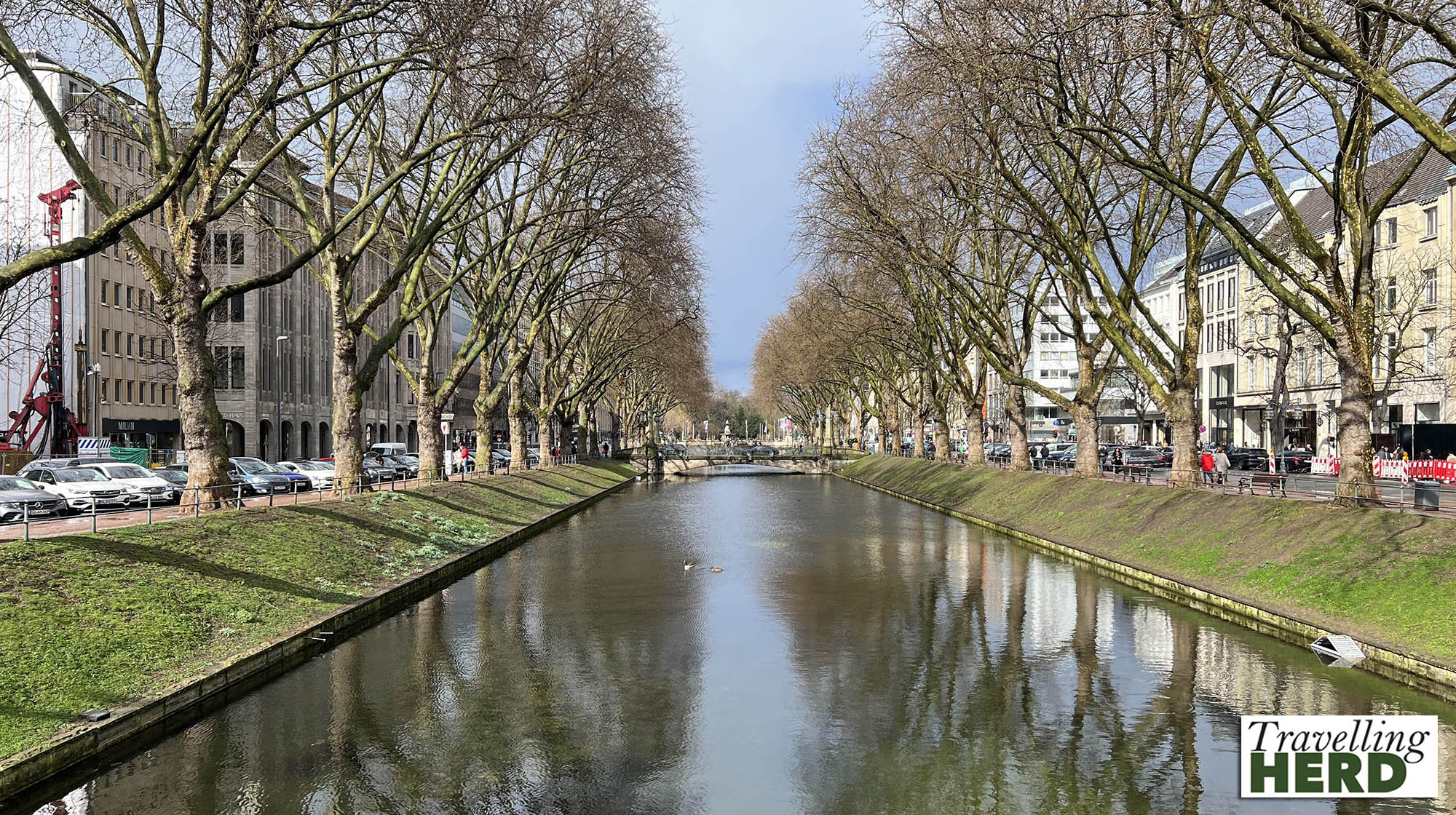
The Tritonenbrunnen [Triton Fountain] depicts the Greek god of the sea sitting majestically on an artificial rock in the middle of the Kö-Graben canal and is a popular spot for tourists to take photographs. The views may be better from the other direction but they are full of tourists.
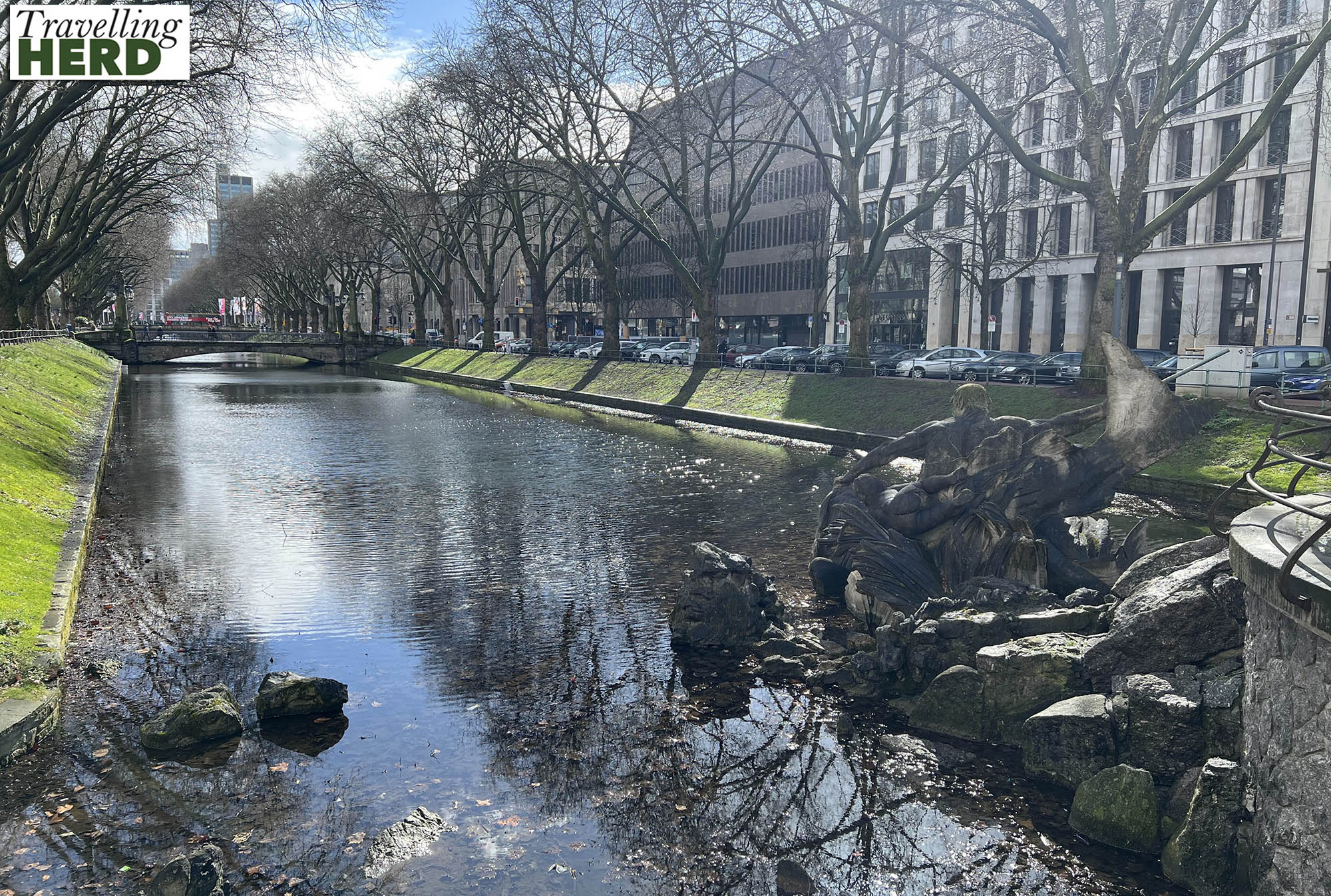
We then strolled down Flinger Straße and took a detour down Schneider Wibbel Gasse – surprisingly this small road is dominated by Spanish restaurants. Our interest was piqued by a group of people standing, looking up at something. This turned out to be the Schneider-Wibbel Musical Clock with a glockenspiel which re-enacts the story of the play Schneider Wibbel [Wibbel the Tailor] five times a day at 11:00, 13:00, 15:00, 18:00 and 21:00. We were lucky to be passing at just the tight time [see brief Video of the day].
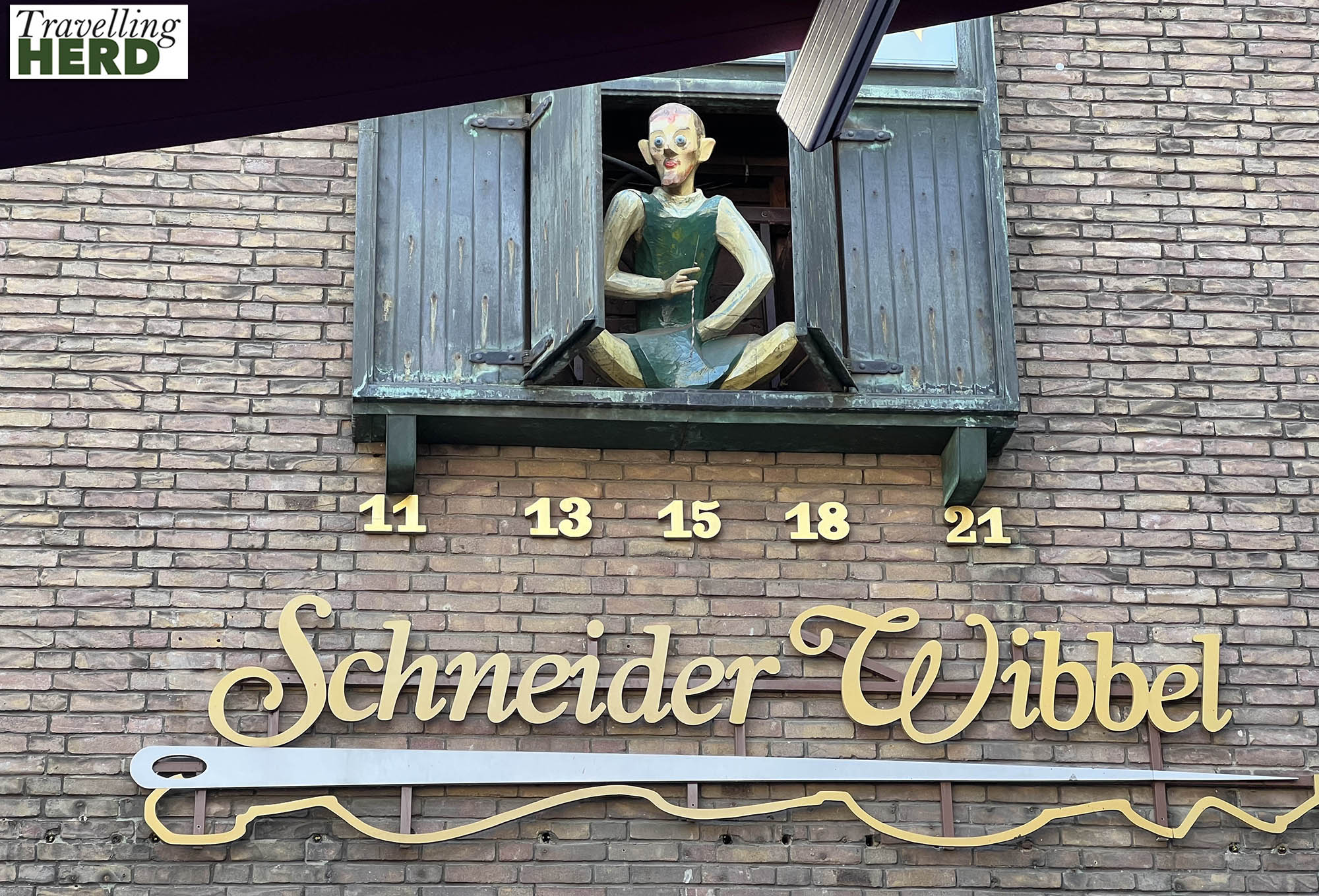
The comedy Schneider Wibbel is set in Düsseldorf during French occupation at the time of the Napoleonic Wars and was first performed in 1913. Wibbel was a dressmaker who insulted Napoleon and was sentenced to prison. Instead of going to jail himself, Wibbel sent his apprentice, who died there, leading everyone to believe mistakenly that Wibbel was dead. The character of Anton Wibbel has come to embody the typical, ‘clever Rhinelander’ and become a popular symbol of Düsseldorf. This tale seemed very hard on the apprentice and we were not sure that we saw the humour of this situation.
In passing, Robert spotted an empty table outside the Obergärige Hausbrauerei Uerige, and so we stopped for an altbier to escape the rain. Altbier (literally: old beer) is a traditional style of beer brewed in the Rhineland, especially around the city of Düsseldorf. It gets its copper colour from being top-fermented using darker malted grain, an older method than the bottom fermentation used to brew lager.
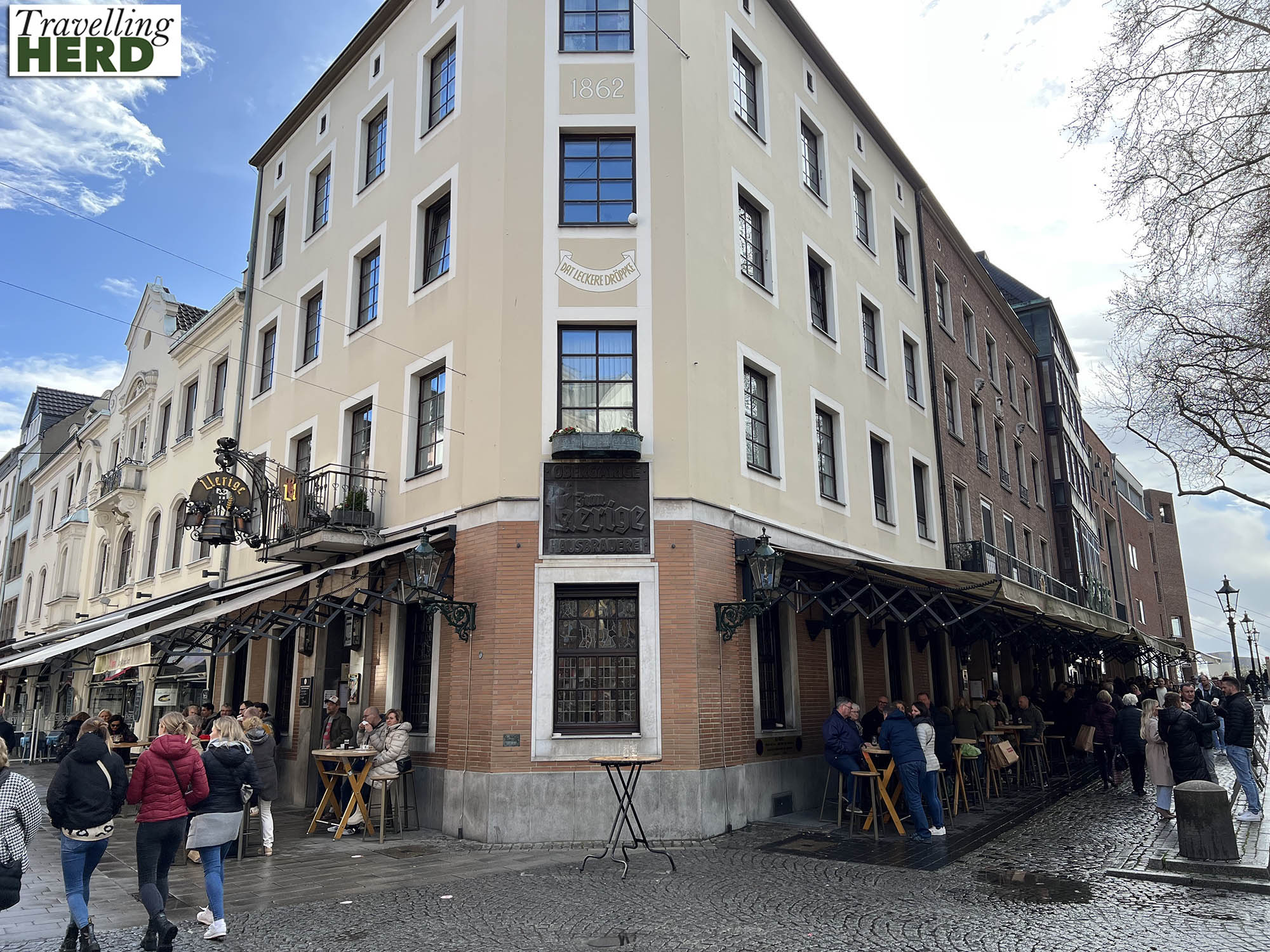
There is only one type of beer and only one size of glass.
Beer is served directly from the barrel in 0.20l or 0.25l glasses and the waiters circulate with trays of foamy beer. Initially the waiters [known as köbes in this context] were employed for their genial banter and story telling prowess so the most successful bars were obviously those with the most convivial staff. This part of the tradition seems to have waned somewhat and the waiter who served us was bordering on hostile.
The waiter marks the number of drinks you have had on your beer mat as a running tab; placing the beer mat on top of your glass indicates that you are ready to pay and leave. Post-Covid, we have become so used to using cards everywhere that it came as a bit of a shock when everywhere demanded cash. Luckily Robert had some emergency Euros with him.
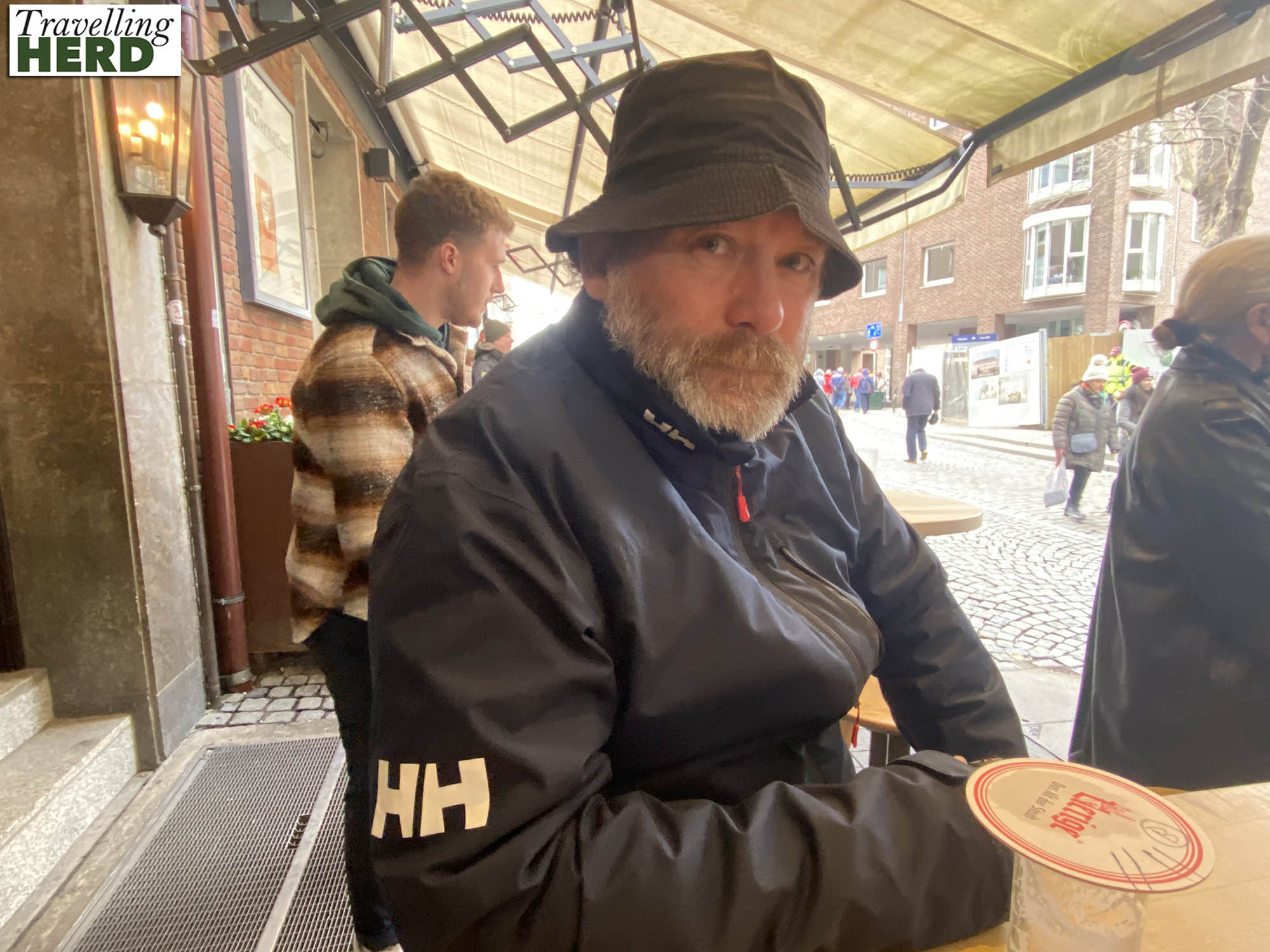
Robert felt he needed to sample as many of the local altbiers as possible [5 beers = 2 pints]. Walking through the Altstadt we passed through Marktplatz the main central square dating back to as early as 1392 and saw the late Gothic Rathaus.
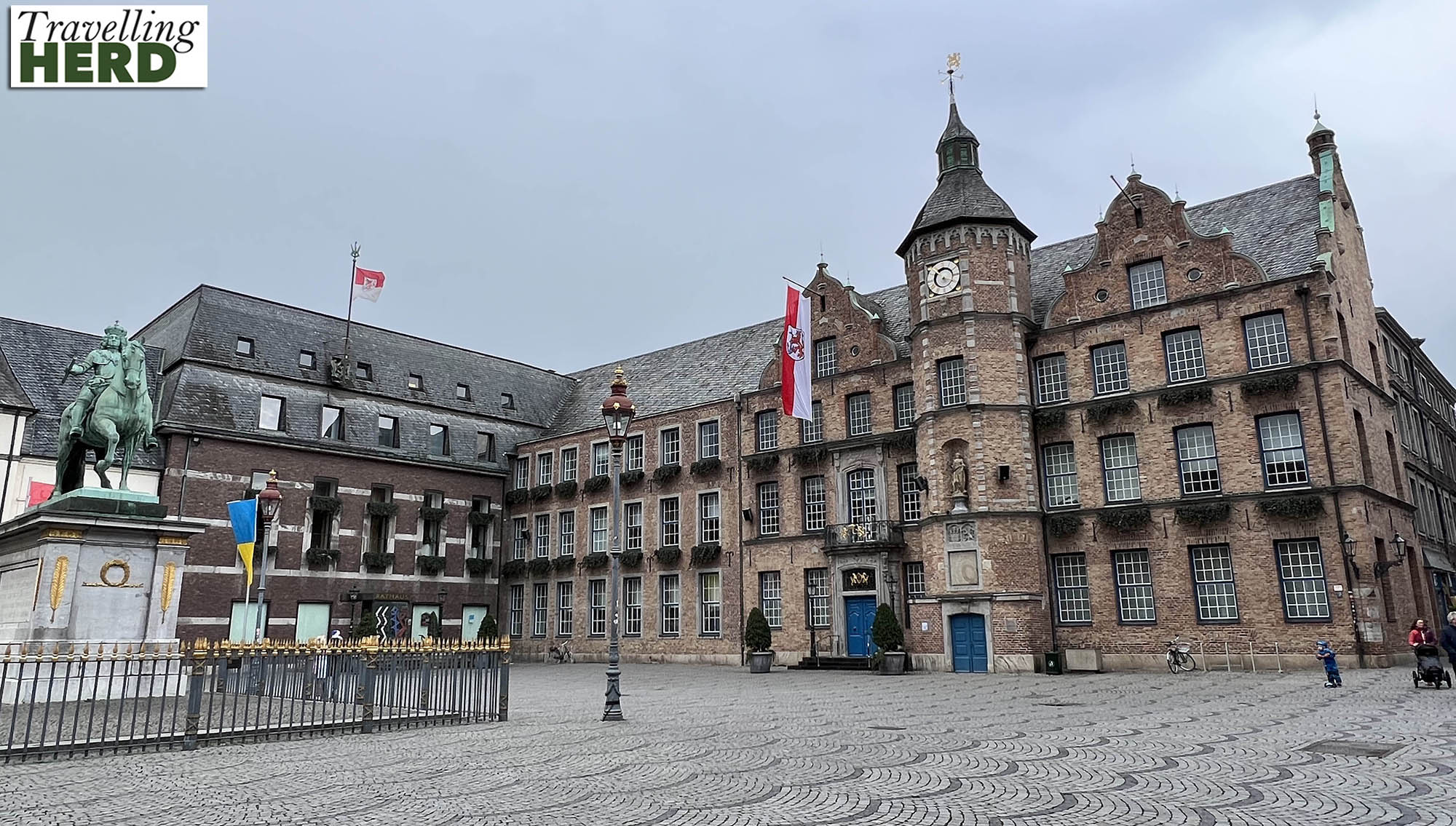
The old town and Bolkerstraße is apparently known as “the longest bar in the world” as it is home to so many breweries and hostelries.
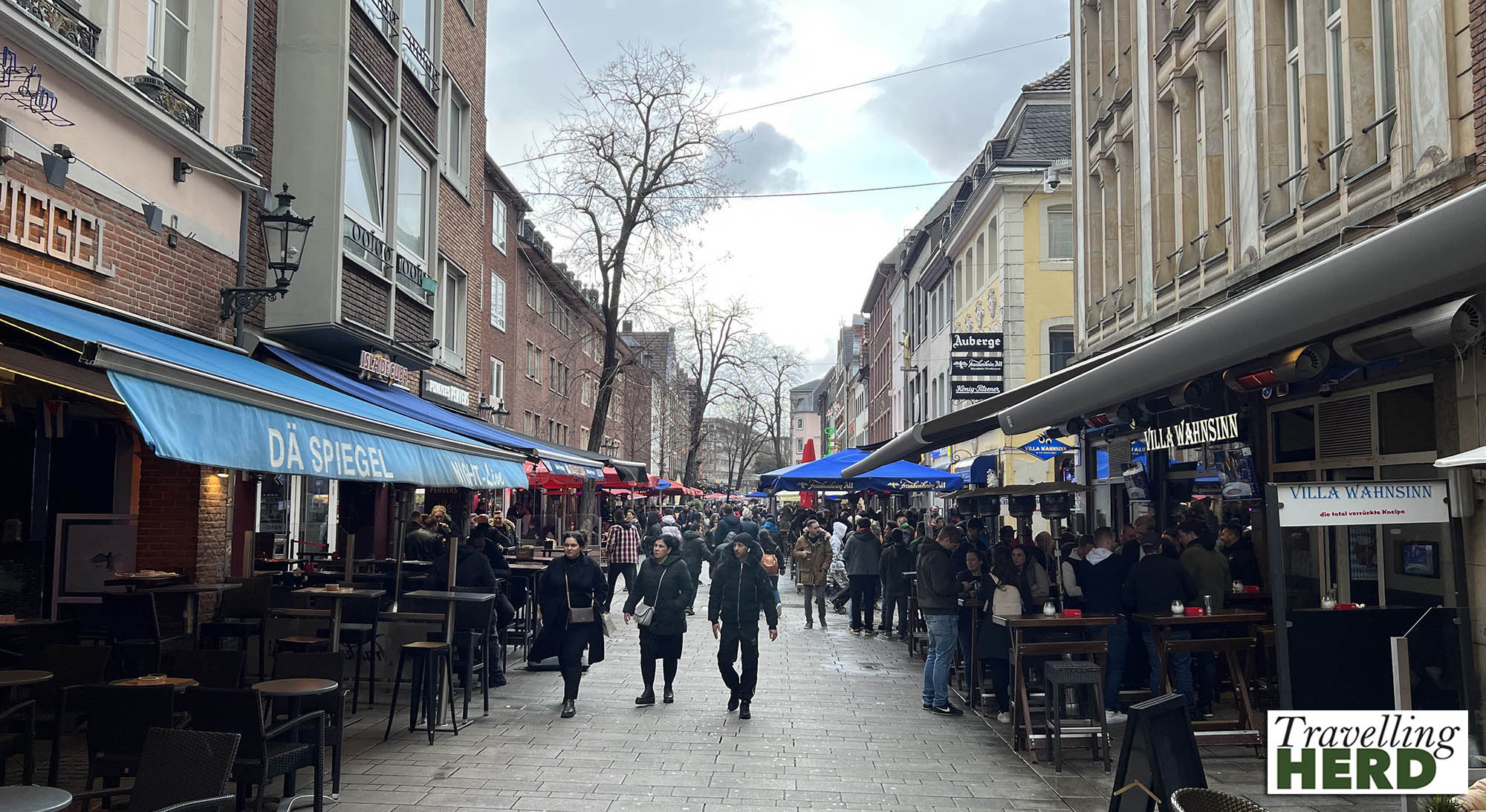
There are eight altbier breweries in the city, each offering its own version. At the older breweries it is served from wooden barrels which rise from the cellars to bar level in lifts, rather like the organ appearing through the floor in the days of silent cinema. Once at bar level, the barman taps the barrel and loads up trays of beer for the waiters, using one barrel at a time.
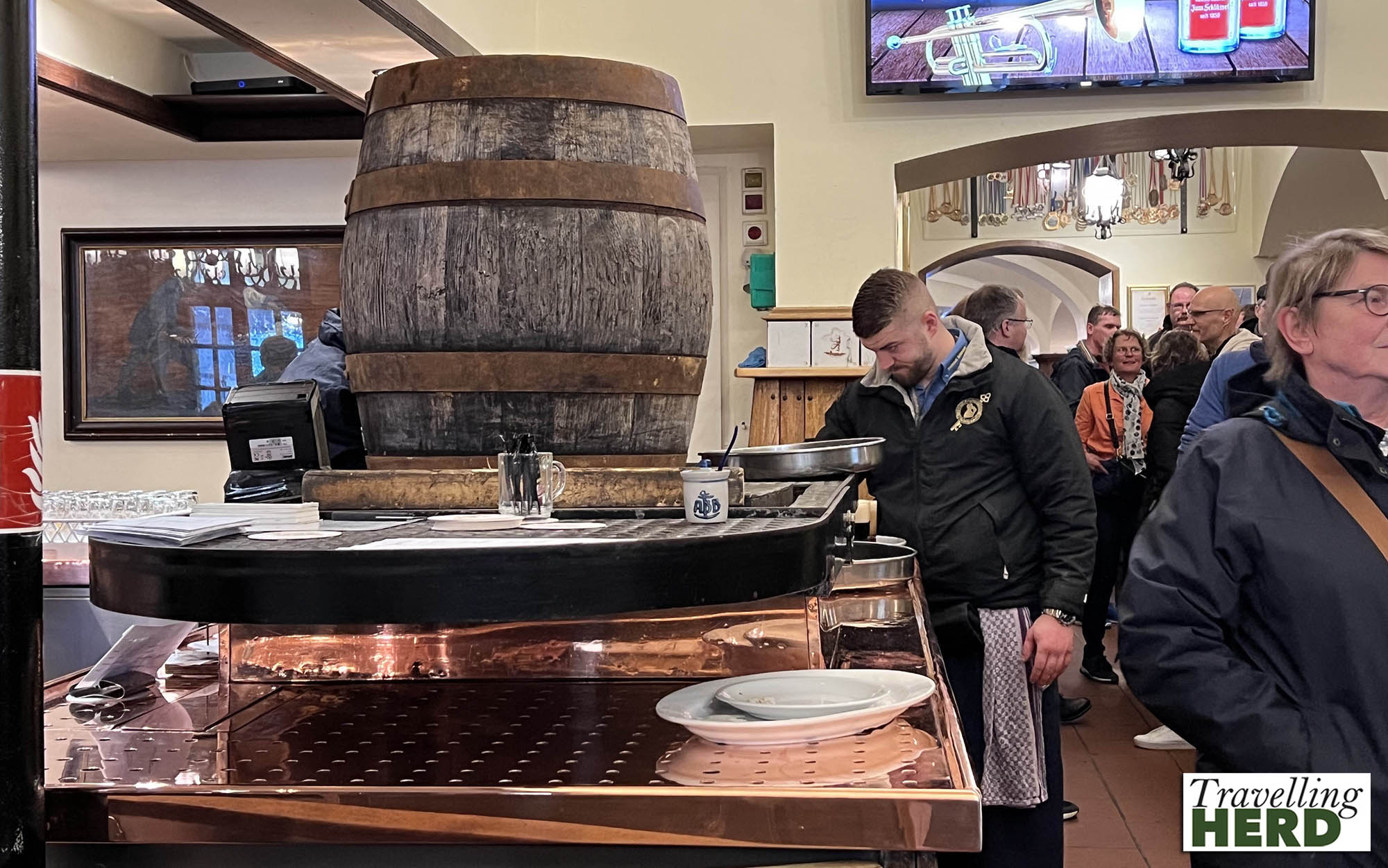
We tried the brew at Hausbrauerei Zum Schlüssel [meaning key] which has been brewing for more than 170 years according to the glasses the beer is served in. Established in 1850, it gets its name from the custom of keeping the keys to the town gates in public houses.
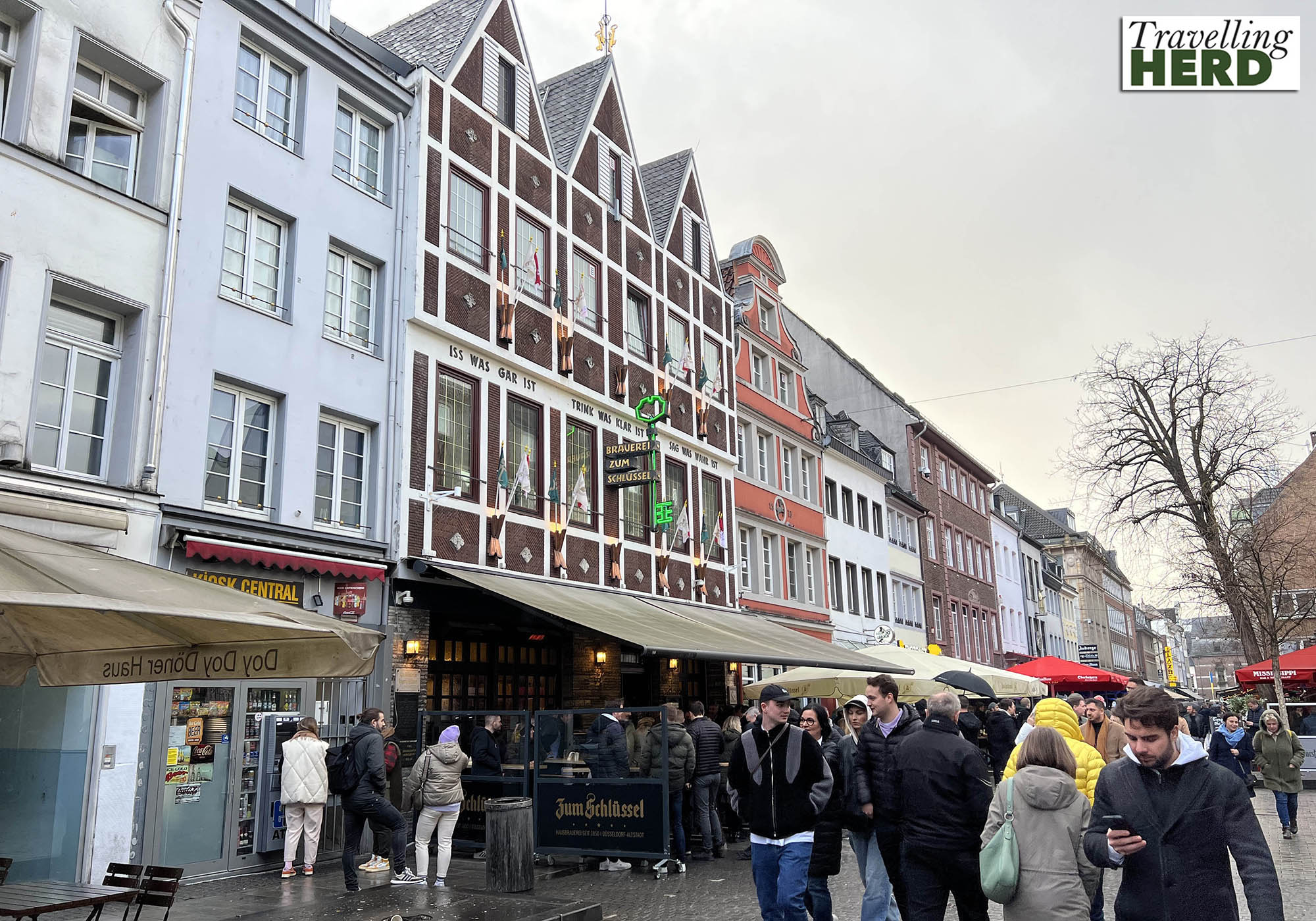
Beer is no longer brewed on site at Im Goldenen Kessel but Schumacher altbier is delivered to its former brewery which was destroyed in air raids in 1942. The Schumacher Brauerei was the first to brew altbier in 1838.

Brauerei Kürzer on Kurze Straße was established in 2010, is a modern take on the altbier theme and features a glass beer barrel on the bar. The beer here reminded Matilda of a coffee stout and she pronounced it her favourite so far. After copious samplings she also decreed it was time for food and then sleep.
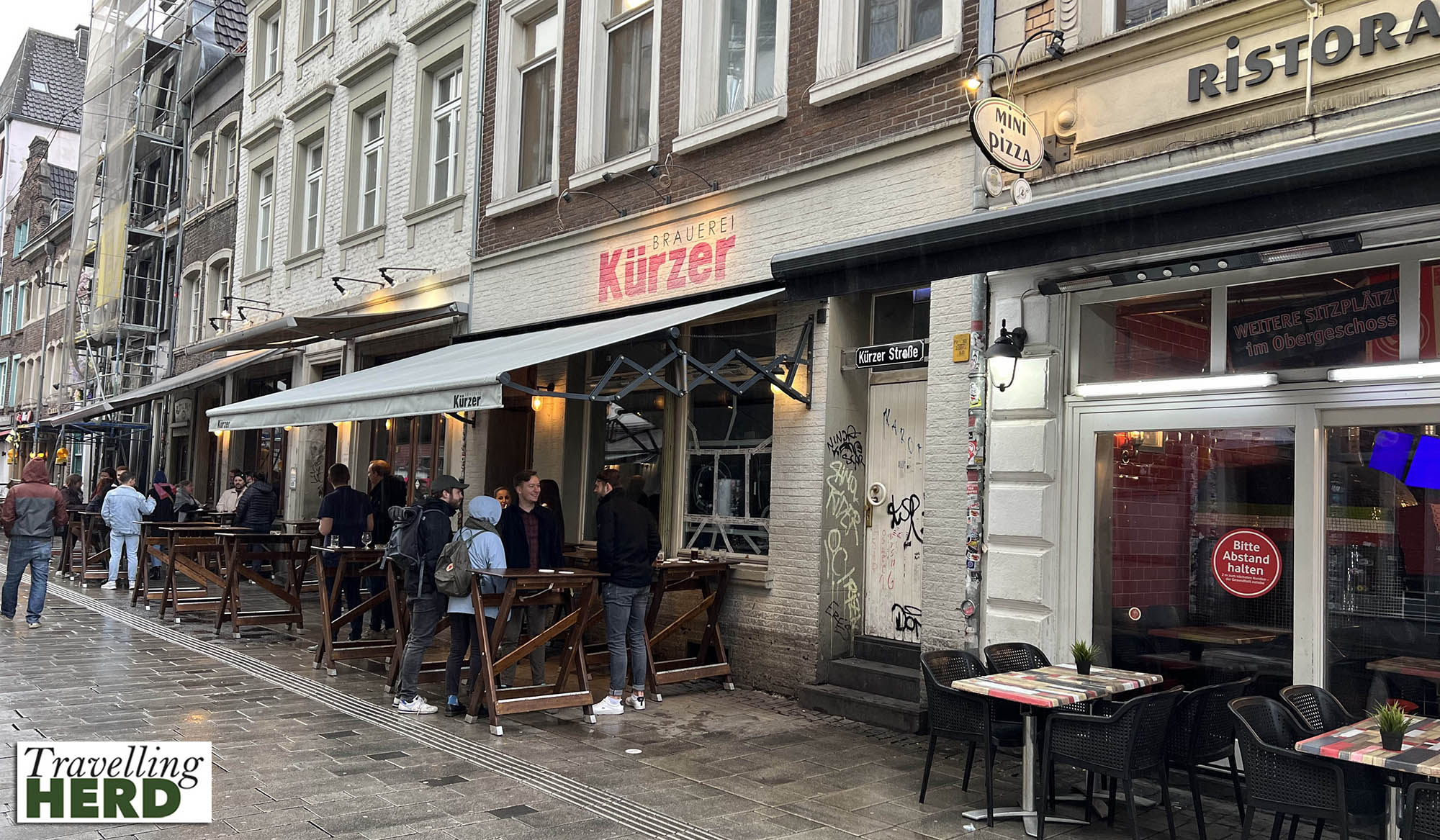
Overnight the clocks changed and even though we are away from home Matilda was woken by our dog Ralf barking. It took her a while to realise that this was a dream. She was pleased to note at 08:20 (07:20 UK time, 06:20 UK time before the clocks changed) he had allowed her to have an hours’ lie in.
The next day after breakfast, we decided to get a one day travel pass and head down to the river to walk along the Rheinuferpromenade [embankment] and see the Neuer Zollhof and the Rheinturm.
Neuer Zollhof was built in 1998 and is in fact three separate buildings with curved walls which give the impression that the buildings are leaning. The American architect Frank O. Gehry who designed them also created the Guggenheim Museum in Bilbao, Spain.
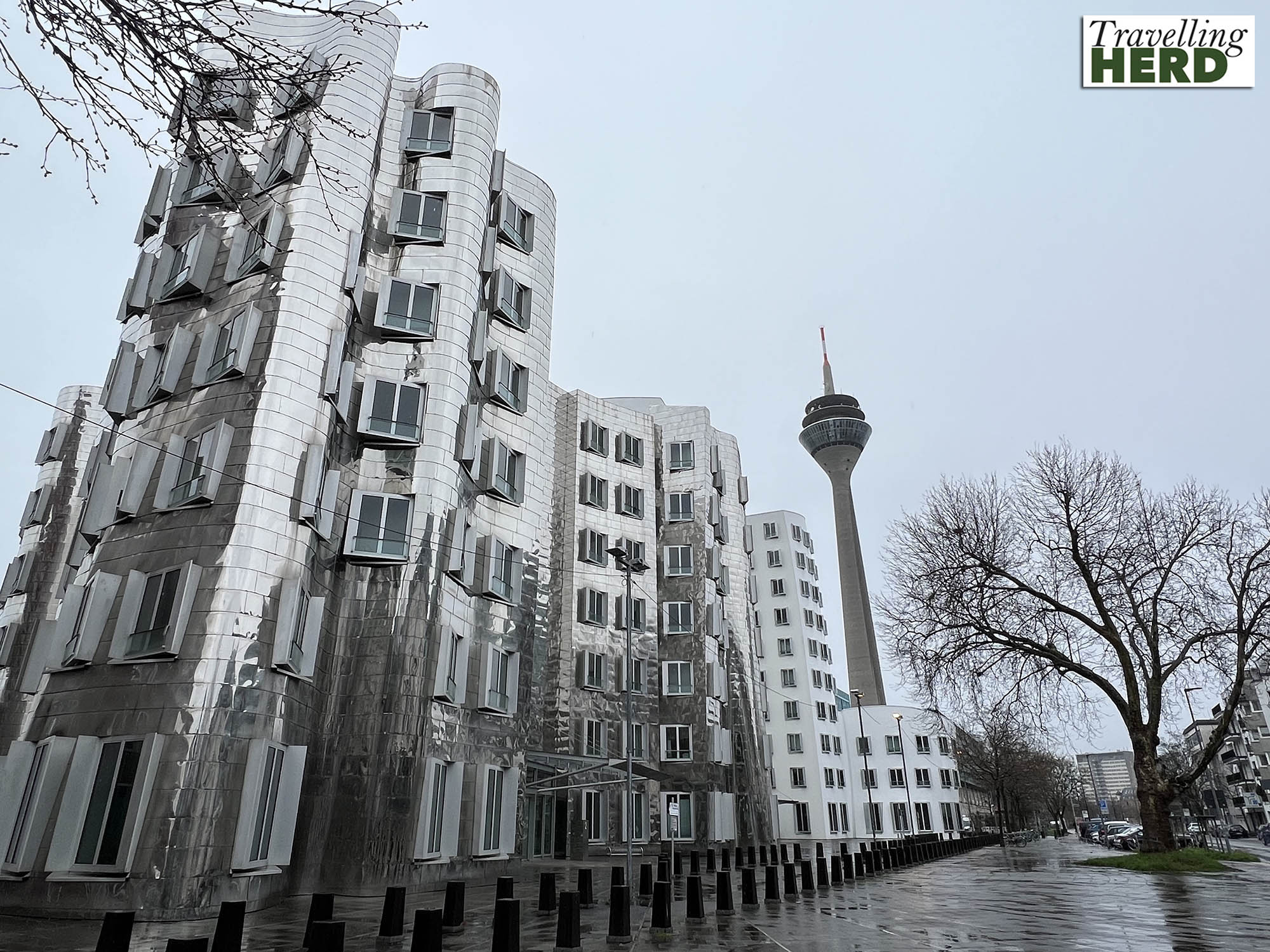
The Rheinturm [Rhine Tower, above right] is perhaps Dusseldorf’s most recognisable landmark. Created by architect H. Deilmann and built between 1979 and 1982, the Rheinturm is a 789 foot tall telecommunications tower situated at the entrance to the Media Harbour with a viewing platform, known as M168 as it is 168 metres above ground.
It is said that you can see Köln cathedral on a clear day but even in the rain and mist the views are impressive.
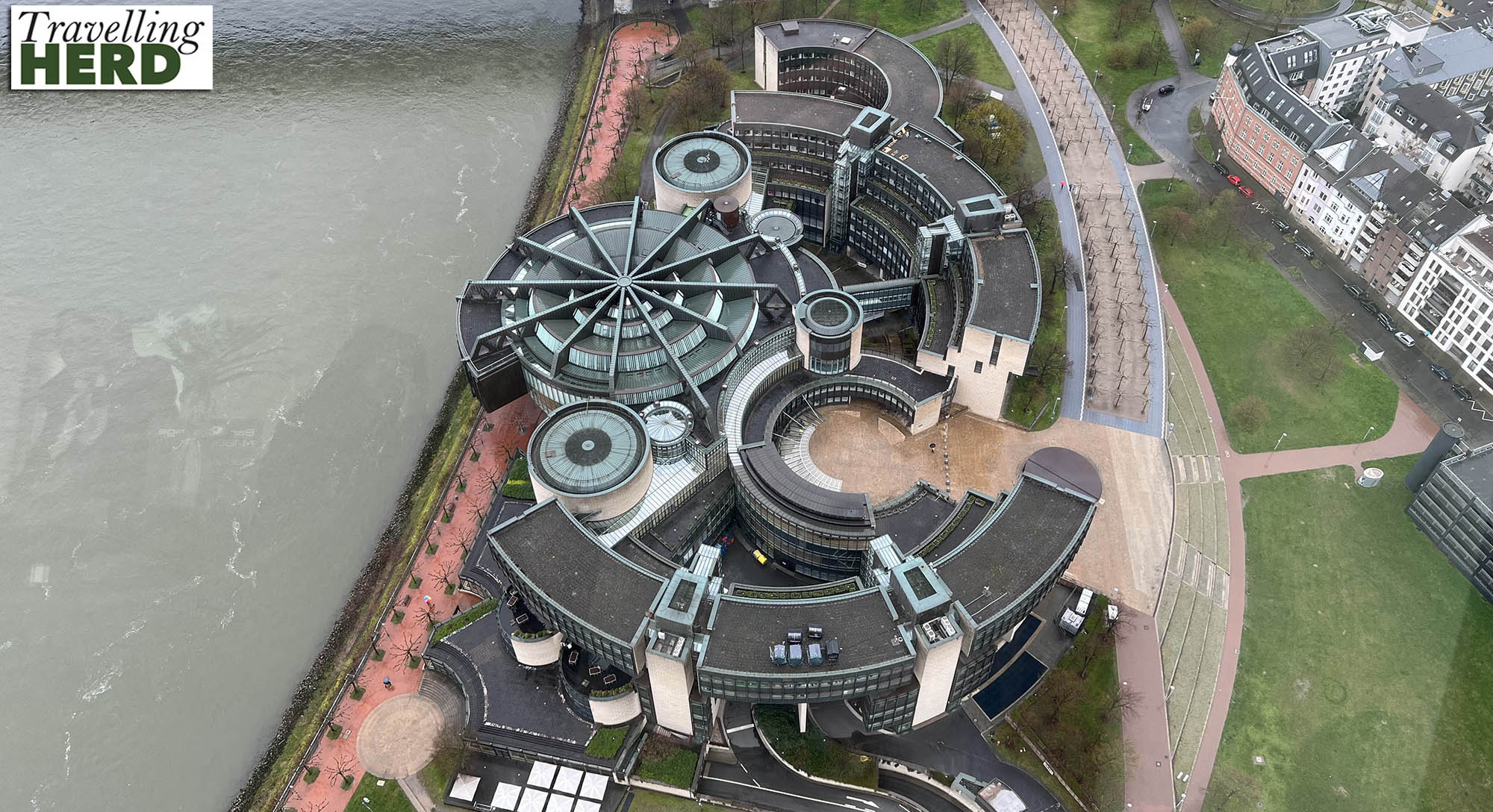
Above the viewing platform, right at the top of the tower at a height of 172.5 metres, is QOMO, a restaurant which rotates around its own axis once every 72 minutes.
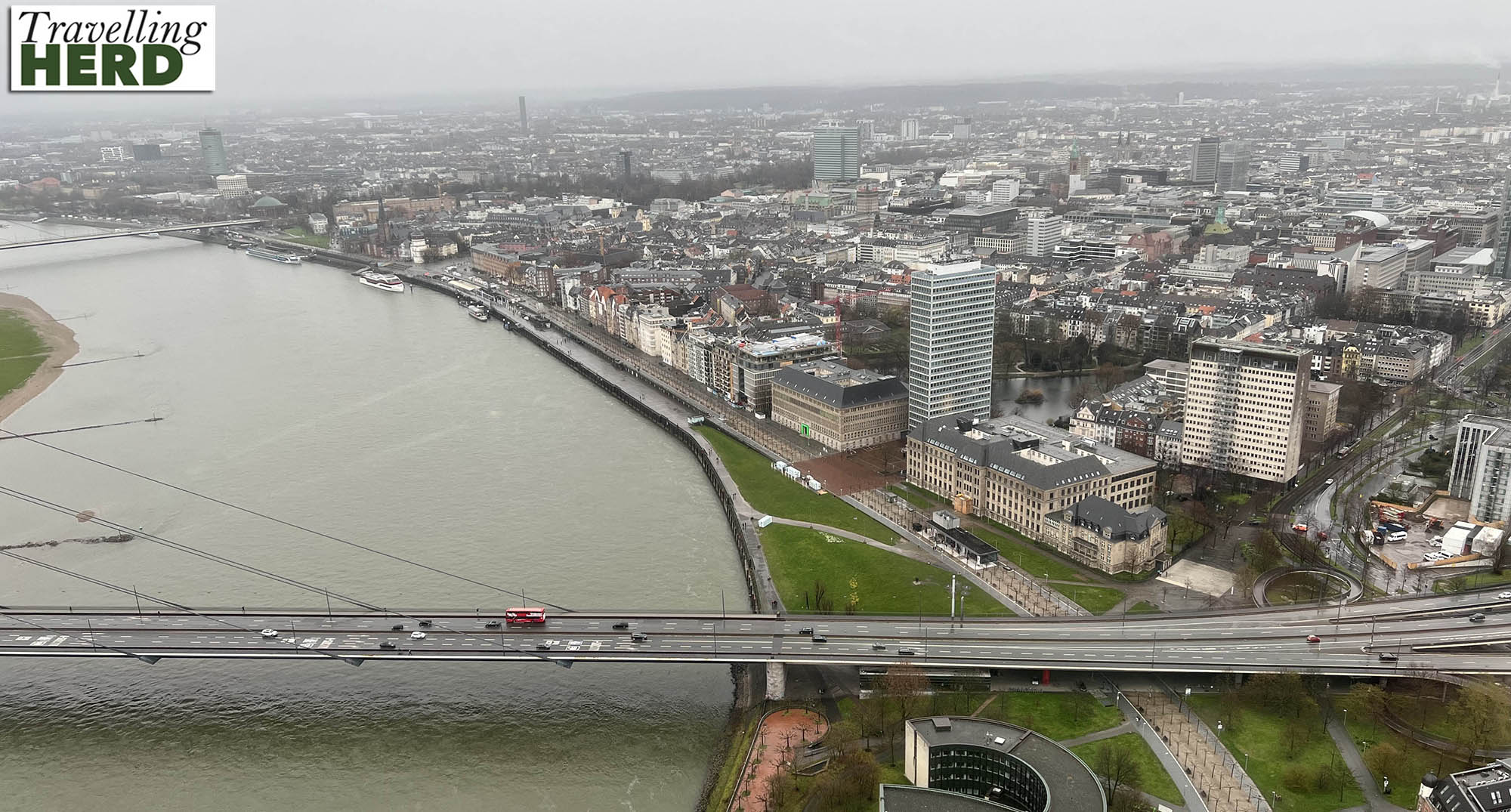
The shaft of the Rheinturm is in fact the largest digital clock in the world, called Lichtzeitpegel [Light Time Level]. Illuminated dots represent the hour, minutes and seconds but sadly this was not very obvious in daylight.

From the observation deck we could see the Schloßturm, all that remains of Düsseldorf Castle. Originally built in 1260, the first three levels date to the thirteenth century. The polygonal fourth level was added in 1552 and the fifth level with rounded arches was added in 1845. The castle fell largely into disrepair and burnt down in 1872 but a tent roof was added to the tower in 1882.
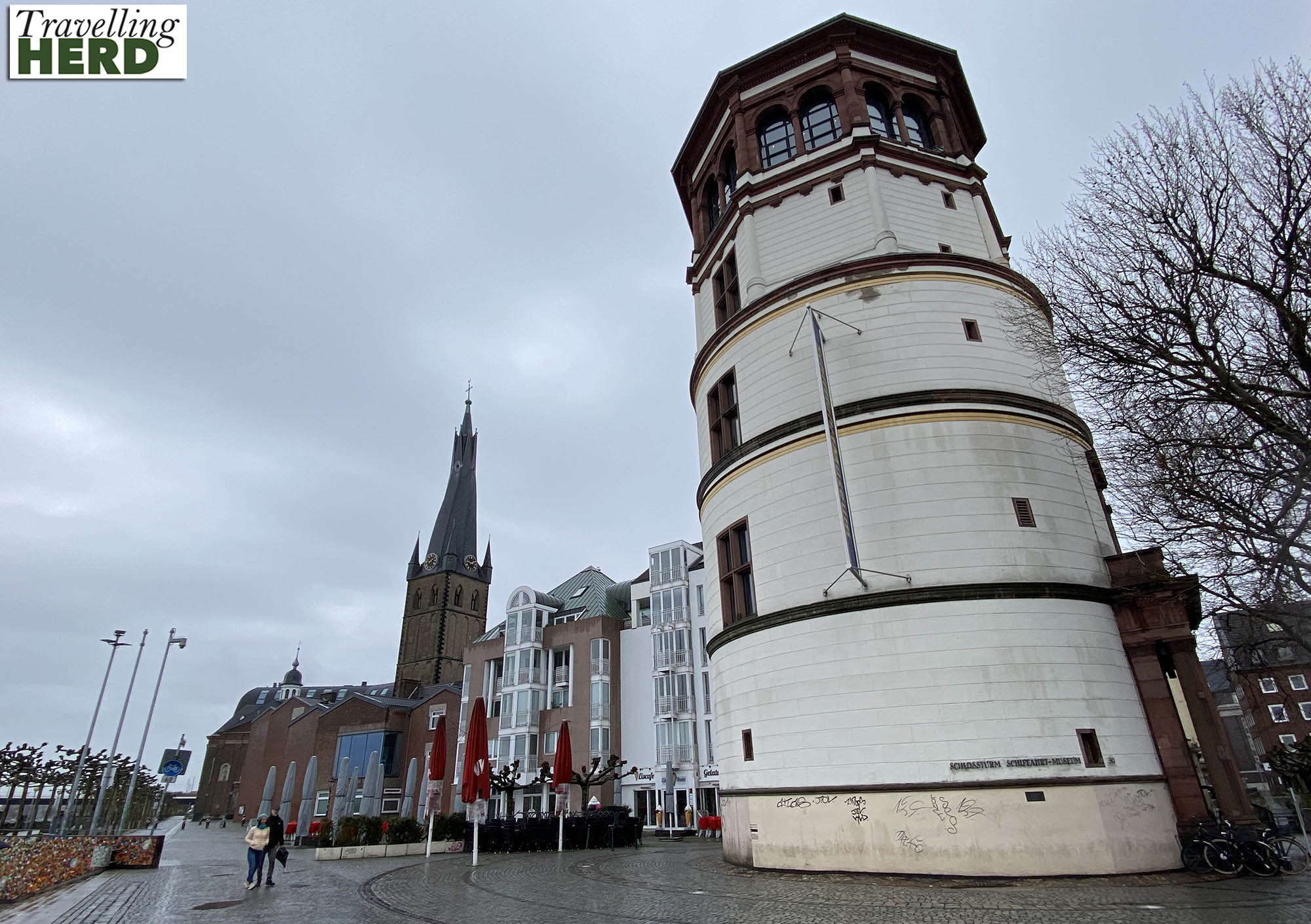
Building started on Lambertuskirche [St Lambertus Church] in 1288, the year Düsseldorf was founded and was originally dedicated to Our Lady. In 1805 it was reconsecrated and dedicated to Saint Lambertus, the bishop of Maastricht who was martyred in 705. In 1815 the original spire was hit by lightening and destroyed by fire. The spire was rebuilt and developed a striking twist, probably as a result of being built with damp, fresh timber although legend has it that the devil tried to uproot the church and his failed attempt caused the twisted spire.
The modern stained glass and vaulted ceiling inside are both impressive.
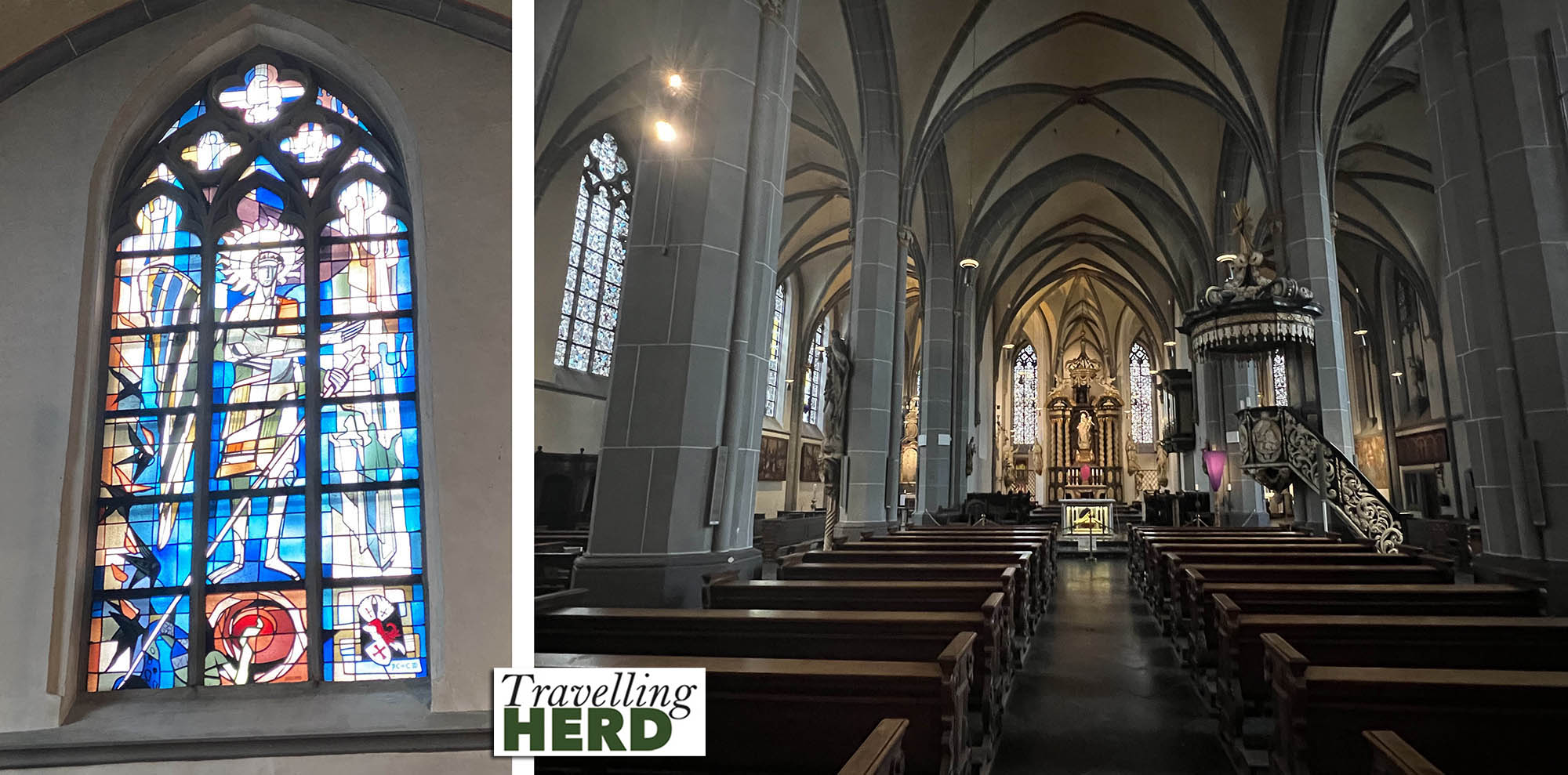
The spire was again damaged in WWII and residents insisted that the twisted spire be recreated when it was rebuilt.
A short walk from Lambertuskirche is the Stadterhebungs Monument which was created in 1988 to mark the 700th anniversary of the founding of the city. The helmets and breastplates represent the Battle of Worringen in 1288 whilst the cart represents the city’s market rights. The monument also includes the city’s original charter and the Lambertuskirche.
Düsseldorf has much to offer but it would be so much more enjoyable if the constant rain would just stop.
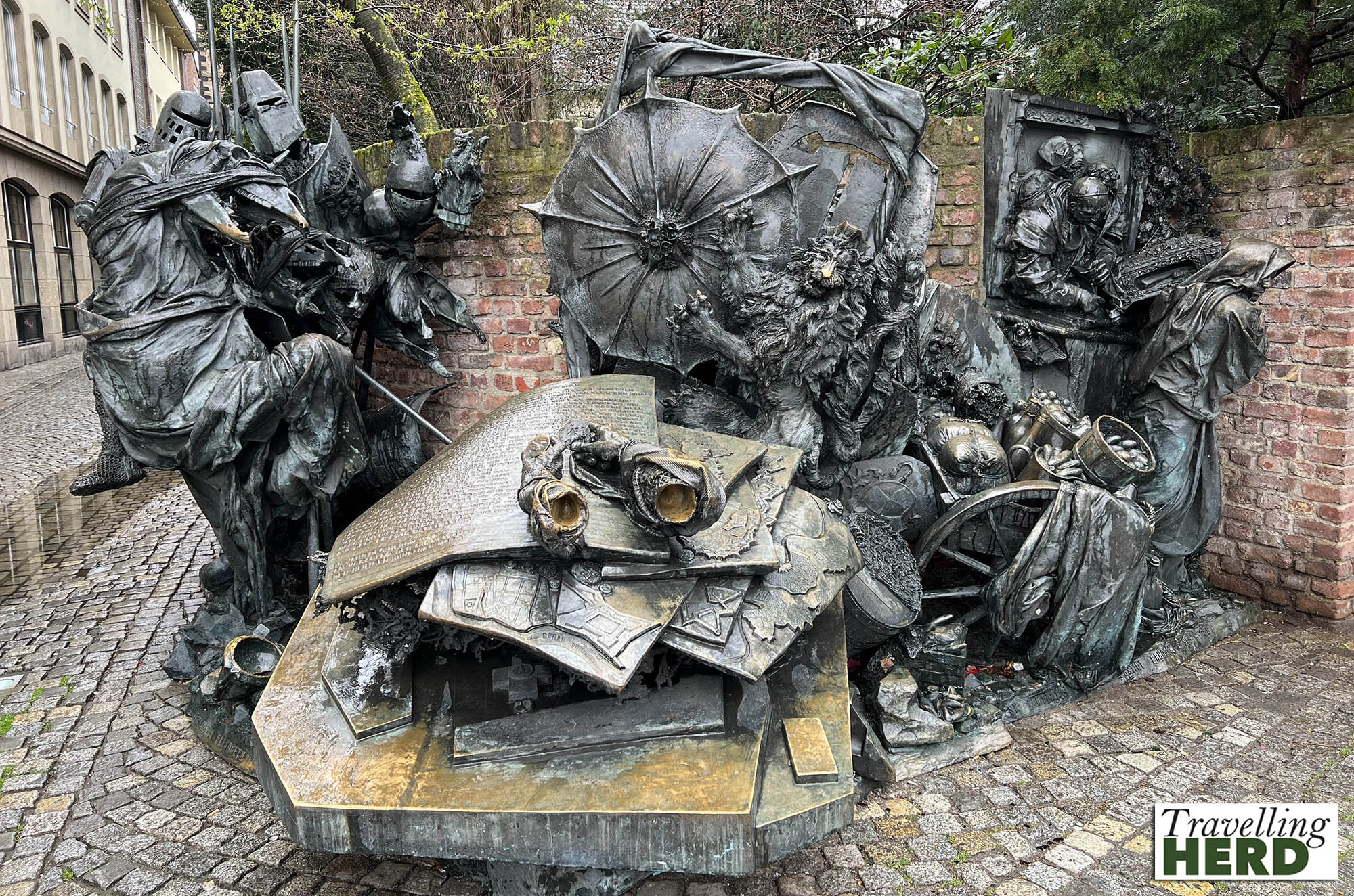
Video of the day:
Selfie of the day:
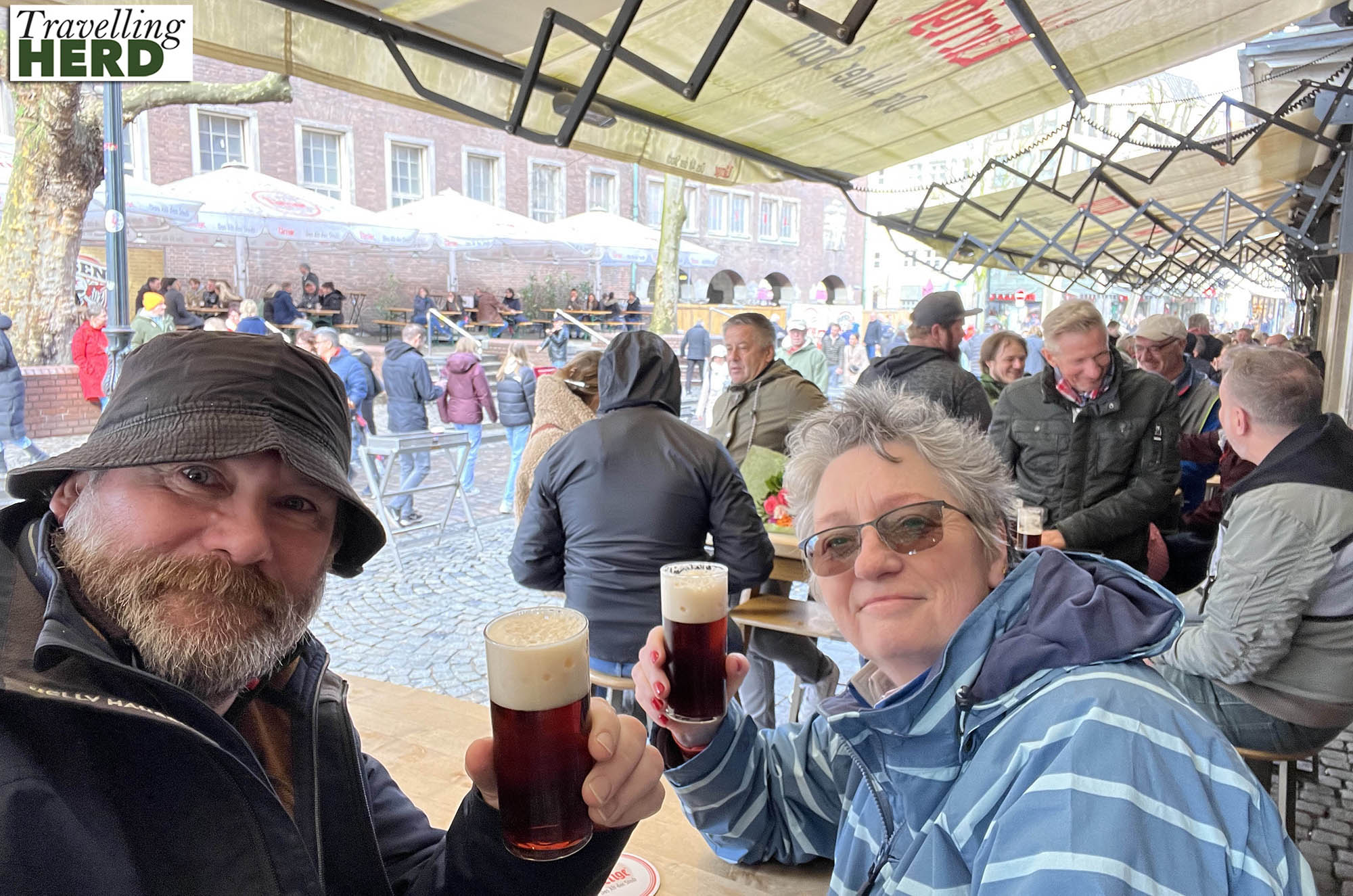
Route Map:






